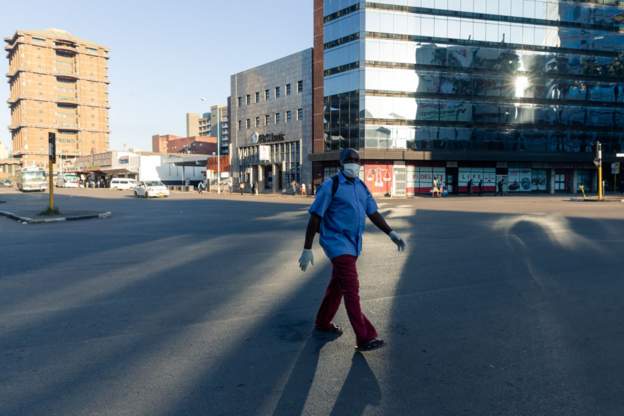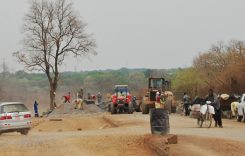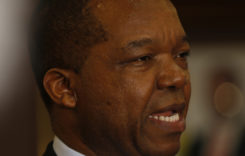By Nancy Kachingwe
The World Health Organisation (WHO) has provided countries with guidelines on exiting Covid-19 lockdowns.
The six point guidelines for “maintaining transmission to a steady state of low-level or no transmission” consists of the following:
- Transmission is controlled
- Sufficient health system and public health capacities are in place particularly for detection, testing, isolation, quarantine
- Outbreak risks in high vulnerability settings are minimised
- Workplace preventive measures are established
- Risk of imported cases is managed
- Communities are fully engaged.
When President Emmerson Mnangagwa announced an extension of the lockdown, the main reason given was that Zimbabwe was yet to meet these conditions.
But what was glaringly missing was how far we are from meeting these conditions, even though some indications of progress were given. Furthermore, the government’s own plans and objectives in meeting these criteria have yet to be laid out.
The fact of the matter is that the post-lockdown phase, should it begin on 3rd May, has to be the start of many months of stringent prevention, detection and containment. Details matter, and the absence of details on an issue that is all consuming allows speculation, misinformation, uncertainty and panic.
The more information and detail the government can provide on these points, the stronger confidence and engagement in public responses will be.
Is transmission controlled?
The answer to this seems to be that we do not know even though by all appearances the lockdown has prevented the mass silent transmission that resulted in unmanageable transmission and surge of cases and deaths even in developed countries (France, Italy, UK, US) that delayed in taking stringent containment measures as soon as the first few COVID cases were identified.
Coronavirus spread relies on a long (two weeks) time lag where infection happens silently before numbers of sick people explode. In addition, large numbers of carriers will have mild or no symptoms at all.
Even as the number of cases in Zimbabwe is rising, the kind of surge of cases has not happened. Not only that, we appear to be at a stage where clusters of cases have emerged – this may yet happen, given that in many areas a full lockdown has not been possible, for example because of dependence on communal water sources.
We can assume that transmission continues to be low level, but our health authorities need to explain clearly the infrastructure in place to control transmission.
Isolation and quarantine
Isolation and quarantine also appear to present problems, with the spotlight on this issue being on the recent case of returning residents who were quarantined at Belvedere Teachers’ Training College in Harare.
Whatever the facts of the case are, quarantine should not be perceived as a punitive exercise where people are not able to go through the stress of quarantine in dignified and healthy conditions. Human rights apply in conditions of quarantine or isolation—all aspects of this pandemic management must be grounded in human rights.
Better guidelines and options for quarantine in homes where there are a large number of occupants should also be disseminated.
What is the capacity?
Do we have sufficient health systems and public health capacities for detection, testing, isolation and quarantine?
The Ministry of Health and Child Care circulated a memo on 14th April with an updated testing strategy. In addition to listing 12 criteria for priority testing, the ministry stated that it was targeting a total of 33,000 tests by 30 April, but its update of 29 April gives the number of 7,287 tests carried out in total.
There has not been information from the Ministry of Health regarding the data gathered from its existing influenza and respiratory disease surveillance system. Some of the reports on cases suggest that there are large cracks in this system, so that patients consulting their private health care practitioners are sent home without signalling to the authorities.
Nor has there been comprehensive reports regarding the follow up of visitors and returning residents who came into the country during February and March from COVID-19 hotspots. Community and health awareness is critical in encouraging those who show symptoms to report to health facilities, but we should be worried that both media and officials have published articles or made statements that increase COVID stigmatisation, which will discourage people who have COVID symptoms from coming forward for testing until they fall seriously ill.
Are we able to minimise outbreak risks in high vulnerability settings?
The government has not indicated which settings it considers to be high vulnerability and what specific measures are in place for those settings. Given the size of the informal sector in the country, the reorganisation of the sector would be a priority in this case.
In the past fortnight, local authorities set about demolishing vendor stands across the country.
Protests from vendor and informal sector associations as well as trade unions suggest that this action was undertaken without consultation with vendor representative organisations on alternatives to reorganise the sector so that this sector can adopt the necessary hygiene and social distancing guidelines when it resumes operation.
There is a definite need for a comprehensive plan for the informal sector to operate in conditions that allow for public health, but it will not help to criminalise the sector.
Lack of water and sanitation create unnecessary vulnerabilities particularly in high density areas. It seems impossible that a water delivery system to high density areas cannot be organised in a short period of time.
Have workplace preventive measures been applied?
The workplace setting of greatest concern is the health sector itself where hospitals, clinics, testing and isolation centres are at the frontlines of the pandemic; at the same time, countries have reported a spread of the disease from hospitals where cases are concentrated.
Globally, shortages of PPEs are making headlines, and Zimbabwe is fortunate not to be at a level where there is a high demand for PPEs.
Nonetheless, it appears that many parts of the health sector are operating in a business as usual way as regards the use of PPE.
In addition to the health sector, all other sectors need to have guidelines and clear plans on worker (and customer) protection, physical distancing, case detection and isolation (WHO has issued basic guidelines to support this).
Workplaces are very different in terms of physical distancing possibilities. The government has lifted the lockdown on the mining sector ‘on condition that necessary measures are taken’.
But what are those measures? Has the mining sector come together to offer their plans to ensure protection and containment within their sector?
What measures are in place to ensure protection of the large artisanal mining sector where even under normal circumstances, health and safety measures are a distant concern?
For other sectors, employers, workers and concerned stakeholders must develop plans on their COVID prevention measures and make these widely available.
Staggered working hours?
And of course, the issue of opening up workplaces begs the question of our congested and overburdened public transport system.
One solution to this problem could be to introduce a system of staggered work hours to reduce rush hour congestion and/or to reduce the working day in certain sectors while waiting for a plan to upgrade our public transport system.
Another question mark is around government offices: on any given day, a drive past the passport office buildings in Harare would give an epidemiologist sleepless nights.
One hopes the plans by the department to serve people in alphabetical order on given days would be strictly implemented for social distancing and to avoid crowding.
Is the risk from imported cases managed?
The lifting of the lockdown will eventually have to deal with the issue of travel in and out of the country, but cases can also be imported from one location to another within the country. The temperature screening at airports and other points of entry have not been effective, and the current policy is now to quarantine visitors or returning residents in designated centres.
A large number of new reported cases are still coming from abroad: so far we have not had a case from South Africa, though Malawi reported one confirmed case from SA travel.
A regional approach to the question of opening up travel (which in any event, given the early stage of the pandemic) may be one of the last lockdown measures to be restricted.
Are communities are fully engaged?
At his briefing on 22 April, the director-general of the World Health Organisation (WHO) urged countries to put together their community engagement plan, noting that only 48% of countries reporting to WHO have a community engagement plan.
The importance of such plans is critical as demonstrated for example by the cases of Vietnam and the Indian state of Kerala that have successfully used low-cost containment strategies in the absence of large testing capacities.
Zimbabwe has a strong legacy of community engagement from the HIV and AIDS pandemic. Our entire NGO sector is mobilised around this issue; in addition to the established NGOs, new groups of citizens are coming together to do their part.
Where is the master plan?
These efforts are laudable, but cannot substitute for a national ‘master plan’ which all actors can feed into and do their bit. Online platforms make it easier to centralise information of what is being done from one locality to the next.
The COVID pandemic is demonstrating that non-medical interventions (individual, community, government) are just as, if not more important than the medical ones. Building what one might call COVID19 literacy across all socio-economic groups is key to making sure that any lockdown easing will be successful.
Is Zimbabwe ready to ease the lockdown?
We would like to think so.
But we would call on our health authorities to respond to how we are doing on the WHO’s six guidelines so that there is trust, confidence and full engagement of the people of Zimbabwe to assist in doing their part.
Nancy Kachingwe is a writer and feminist activist across a broad range of social issues, including health, education and skills capacity building. She contributed this opinion piece in her individual capacity.
Do you want to use our content? Click Here












